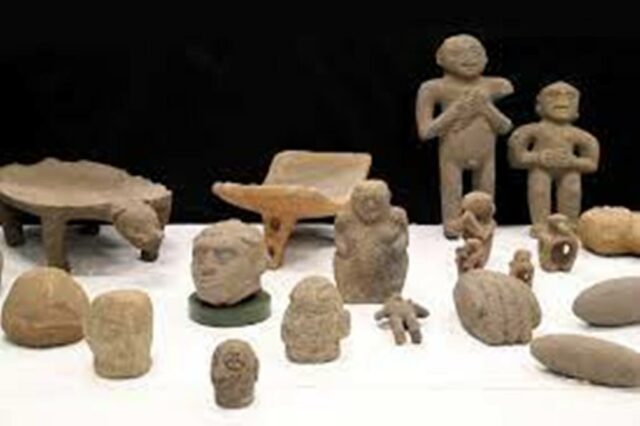Costa Rica recovered 1,305 pieces of pre-Columbian art that had been taken from the country at the end of the 19th century and were in the Brooklyn Museum in New York, Tico authorities reported.
“It was a process that began in 2010, when Brooklyn Museum asked us if we wanted to recover those objects, which at the time were taken due to lack of regulation,” the spokeswoman for the National Museum of Costa Rica, Wendy Segura, explained.

“We made a great effort, because there were many obstacles that ranged from financing to the pandemic. But we finally made it,” she added. The lot was shipped by sea at the end of December from New York, in 31 cured wooden boxes, that so far they have been released for museum handling. This is the second part of a repatriation that totals 2,286 pieces. The first installment was in 2011, when 981 articles were submitted.
Of the utmost importance
“Completing this collection is of the utmost importance for the National Museum of Costa Rica. With it, a part of the cultural heritage of our country returns”, the director of the museum, Rocío Fernández, told the press this week.
The American businessman Minor Keith, who between 1877 and 1890 built the railroad that crosses from the capital San José to the province of Limón, in the Caribbean, was the one who took the pre-Columbian pieces to the United States.
“These pieces will be the object of exhibition, some in the new room of pre-Columbian history under restoration, and others will be the object of investigation and dissemination,” explained Fernández.
The collection includes a medium-sized tombstone and a metate (rectangular stone plate) with a feline figure, as well as pots, vases and household utensils. Also pieces of stone such as spikes and bulk sculptures from the southern part of the country, metates from Guanacaste, in the Pacific, and others of Sukia origin (name of an indigenous ethnic group), from the Atlantic.
Recovering fragments of our past
For her part, the Minister of Culture and Youth, Sylvie Durán, stated that “the recovery of these archaeological pieces means recovering fragments of our past that crossed our borders when we still did not have legislation to prevent it.”
According to a report by the US Department of Heritage Protection, Keith’s collection consisted of more than 16,000 objects and was kept together until 1914, when part of it was loaned to the American Museum of Natural History in New York.
The same was sold or donated to the Museum of the American Indian, the Heye Foundation, and the Smithsonian Institution’s National Museum of Natural History, and after Keith’s death (in 1929), his wife donated various objects to the Brooklyn Museum.

